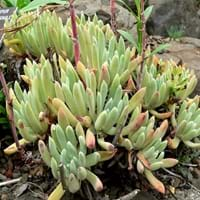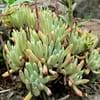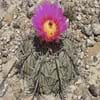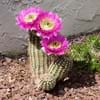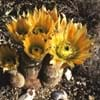Life Span
Perennial
Perennial
Origin
California
North America, United States, Northeastern United States, Mid-Atlantic United States, Southeastern United States, North-Central United States, South-Central United States, Texas
Types
Ulva lactuca, Ulva intestinalis
not available
Habitat
Coastal Regions, shores
Boggy areas, Fens, Fields, meadows, Swamps, Woodlands
USDA Hardiness Zone
10-11
4-9
Sunset Zone
9, 14, 15, 16, 17, 19, 20, 21, 22, 23, 24
1a, 1b, 2a, 2b, 3a, 3b, 4, 5, 6, 7
Habit
Rosette/Stemless
Thicket/Colonizing
Flower Color
Yellow, Red
Not Available
Flower Color Modifier
Not Available
Not Available
Fruit Color
Not Available
Red
Leaf Color in Spring
Gray Green, Yellow green, Gray
Not Available
Leaf Color in Summer
Gray Green, Yellow green, Gray
Not Available
Leaf Color in Fall
Gray Green, Yellow green, Gray
Not Available
Leaf Color in Winter
Gray Green, Yellow green, Gray
Not Available
Leaf Shape
Cone shaped to oblong
Oblovate
Plant Season
Spring, Summer, Fall, Winter
Spring, Fall, Winter
Sunlight
Full Sun
Full Sun, Partial Sun
Growth Rate
Medium
Medium
Type of Soil
Sand
Clay, Loam
The pH of Soil
Acidic, Neutral
Acidic, Neutral, Alkaline
Soil Drainage
Well drained
Average
Bloom Time
Late Spring, Early Summer
Late Spring
Tolerances
Drought
Not Available
Where to Plant?
Container, Ground
Ground, Pot
How to Plant?
Leaf Cutting, Seedlings, Stem Cutting
Divison, Seedlings
Plant Maintenance
Medium
Medium
Watering Requirements
Water slowly, and allow to dry completely between soakings
Keep the ground moist but not water-logged
In Summer
Lots of watering
Lots of watering
In Spring
Moderate
Moderate
In Winter
Average Water
Average Water
Soil pH
Acidic, Neutral
Acidic, Neutral, Alkaline
Soil Type
Sand
Clay, Loam
Soil Drainage Capacity
Well drained
Average
Sun Exposure
Full Sun
Full Sun, Partial Sun
Pruning
Remove damaged leaves, Remove dead branches, Remove dead leaves
Prune after flowering, Prune in early spring, Remove damaged leaves, Remove dead branches, Remove dead leaves
Fertilizers
Fertilzer with low nitrogen content
All-Purpose Liquid Fertilizer, Compost, Fertilize every year, Mulch, Nitrogen
Pests and Diseases
Fungal Diseases, Root rot
Aphids, Apple Maggot, Fall Webworm, Red blotch, Scale
Plant Tolerance
Drought
Not Available
Flower Petal Number
Single
Not Available
Foliage Texture
Bold
Not Available
Foliage Sheen
Matte
Not Available
Attracts
Hummingbirds, Butterflies
Birds
Allergy
Mild Allergen
Not Available
Aesthetic Uses
Not Used For Aesthetic Purpose
Showy Purposes
Beauty Benefits
Not Available
Not Available
Environmental Uses
Air purification
Air purification
Medicinal Uses
Bone strength, Rich in Iron, Rich in protein
Not Available
Part of Plant Used
Leaves
Fruits
Other Uses
Used in salads, Used to flavour soups
Used As Food, Used as Ornamental plant
Used As Indoor Plant
No
No
Used As Outdoor Plant
Yes
Yes
Garden Design
Container, Houseplant, Mixed Border, Rock Garden, Wall
Cutflower, Mixed Border, Screening, Wind Break
Botanical Name
DUDLEYA caespitosa
ARONIA arbutifolia
Common Name
Sealettuce, Sand lettuce, Coast dudleya
Red Chokeberry
In Hindi
Sea Lettuce
लाल Chokeberry
In German
Meersalat
Rote Apfelbeere
In French
La laitue de mer
Red Chokeberry
In Spanish
lechuga de mar
rojo Chokeberry
In Greek
θάλασσα Μαρούλι
κόκκινο Chokeberry
In Portuguese
alface mar
Red Chokeberry
In Polish
Sea sałata
Red aronii
In Latin
Lactuca mare
arbutifolia
Phylum
Magnoliophyta
Magnoliophyta
Class
Magnoliopsida
Magnoliopsida
Family
Crassulaceae
Rosaceae
Clade
Angiosperms, Core eudicots, Eudicots
Angiosperms, Eudicots, Rosids
Tribe
Sedeae
Not Available
Subfamily
Sedoideae
Not Available
Number of Species
Not Available
Not Available
Importance of Sea Lettuce and Red Chokeberry
Want to have the most appropriate plant for your garden? You might want to know the importance of Sea Lettuce and Red Chokeberry. Basically, these two plants vary in many aspects. Compare Sea Lettuce and Red Chokeberry as they differ in many characteristics such as their life, care, benefits, facts, etc. Every gardener must at least have the slightest clue about the plants he wants to plant in his garden. Compare their benefits, which differ in many ways like facts and uses. The medicinal use of Sea Lettuce is Bone strength, Rich in Iron and Rich in protein whereas of Red Chokeberry is Not Available. Sea Lettuce has beauty benefits as follows: Not Available while Red Chokeberry has beauty benefits as follows: Not Available.
Compare Facts of Sea Lettuce vs Red Chokeberry
How to choose the best garden plant for your garden depending upon its facts? Here garden plant comparison will help you to solve this query. Compare the facts of Sea Lettuce vs Red Chokeberry and know which one to choose. As garden plants have benefits and other uses, allergy is also a major drawback of plants for some people. Allergic reactions of Sea Lettuce are Mild Allergen whereas of Red Chokeberry have Not Available respectively. Having a fruit bearing plant in your garden can be a plus point of your garden. Sea Lettuce has no showy fruits and Red Chokeberry has showy fruits. Also Sea Lettuce is not flowering and Red Chokeberry is not flowering . You can compare Sea Lettuce and Red Chokeberry facts and facts of other plants too.
